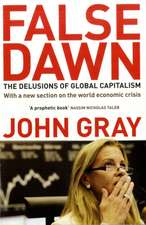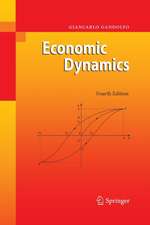Inside a Modern Macroeconometric Model: A Guide to the Murphy Model
Autor Alan A. Powell, Christopher W. Murphyen Limba Engleză Paperback – 12 oct 2012
| Toate formatele și edițiile | Preț | Express |
|---|---|---|
| Paperback (1) | 953.03 lei 43-57 zile | |
| Springer Berlin, Heidelberg – 12 oct 2012 | 953.03 lei 43-57 zile | |
| Hardback (1) | 959.36 lei 43-57 zile | |
| Springer Berlin, Heidelberg – 19 aug 1997 | 959.36 lei 43-57 zile |
Preț: 953.03 lei
Preț vechi: 1162.23 lei
-18% Nou
Puncte Express: 1430
Preț estimativ în valută:
182.36€ • 190.88$ • 151.78£
182.36€ • 190.88$ • 151.78£
Carte tipărită la comandă
Livrare economică 31 martie-14 aprilie
Preluare comenzi: 021 569.72.76
Specificații
ISBN-13: 9783642638367
ISBN-10: 3642638368
Pagini: 476
Ilustrații: XVIII, 455 p.
Dimensiuni: 155 x 235 x 25 mm
Greutate: 0.66 kg
Ediția:Softcover reprint of the original 2nd ed. 1997
Editura: Springer Berlin, Heidelberg
Colecția Springer
Locul publicării:Berlin, Heidelberg, Germany
ISBN-10: 3642638368
Pagini: 476
Ilustrații: XVIII, 455 p.
Dimensiuni: 155 x 235 x 25 mm
Greutate: 0.66 kg
Ediția:Softcover reprint of the original 2nd ed. 1997
Editura: Springer Berlin, Heidelberg
Colecția Springer
Locul publicării:Berlin, Heidelberg, Germany
Public țintă
ResearchCuprins
1 — Setting the Scene.- 1 How to Use this Book.- 2 Distinguishing Features of MM.- 3 Principal Mechanisms in MM.- 2 — Structural Form of MM.- 4 Overview of Part Two.- 5 Wage Behaviour.- 6 Labour Force Participation.- 7 Private Consumption Behaviour.- 8 Behaviour of the Rental Price of Housing.- 9 Production of Housing Rental Services and Investment in Dwellings.- 10 The Enterprise Production Block of the Business Sector.- 11 Business Fixed Investment.- 12 Business Sector Employment.- 13 Import Supply and Demand.- 14 Aggregate Export Supply.- 15 Disaggregation of Export Supply.- 16 Overseas Demand for ‘Commodity’ Exports.- 17 Inventory Investment in ‘Commodity’ Exports.- 18 Demand for Non-‘Commodity’ Exports.- 19 Domestic Good Inventory Investment.- 20 Price Dynamics for the Domestic Good.- 21 Sales of the Domestic Good; Miscellaneous Identities for Investment and Capital.- 22 The Government Sector.- 23 Financial Markets.- 24 National-Accounting, Stock-Flow and Miscellaneous Identities.- 3 — Simulations with MM.- 25 Introduction to the Simulations.- 26 Monetary Shocks.- 27 A Fiscal Shock.- 4 — New Horizons.- 28 MM2 — A Fully Integrated Macro-CGE Model.- References.- Author and Personal Names Index.- Tables.- Figures.- Exercises.
Caracteristici
Principles referred to in the text are illustrated by numerical examples PC users can verify how various key ideas work in practice Archetype, miniature and stylised models are used to explain principles at work in the larger MM model Includes 85 tables, 72 figures and 42 exercises















